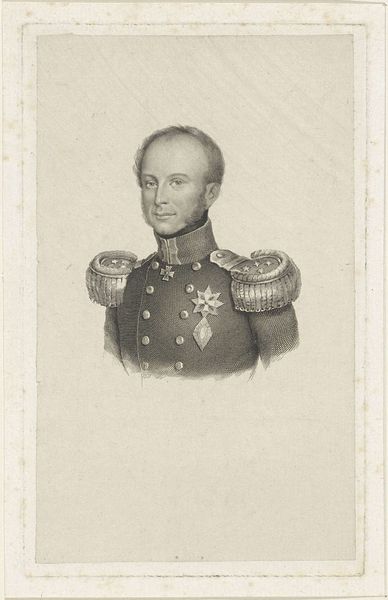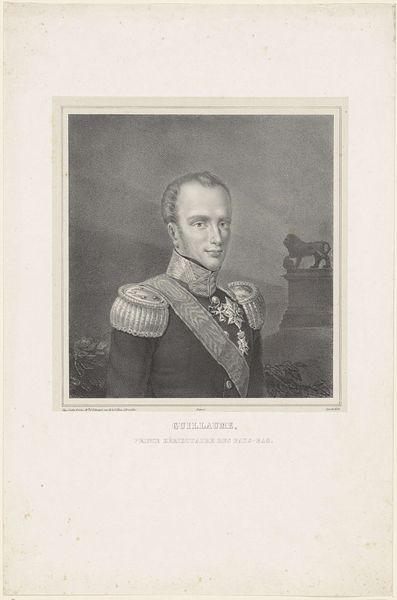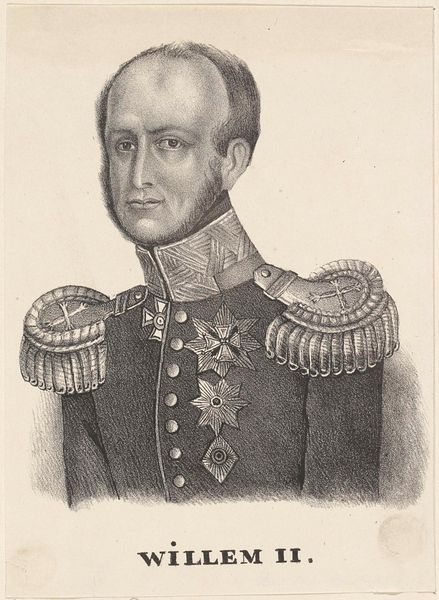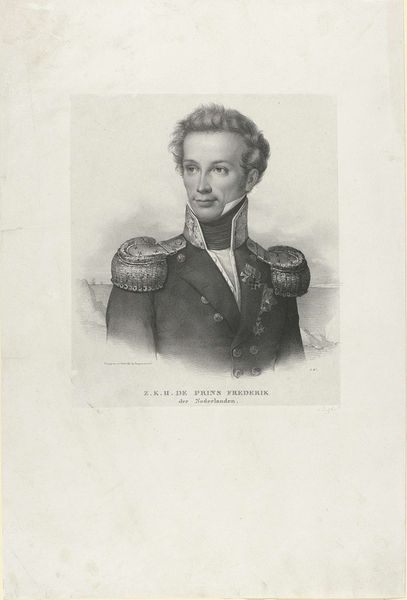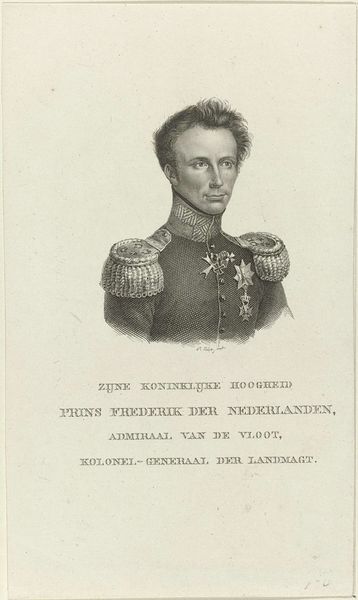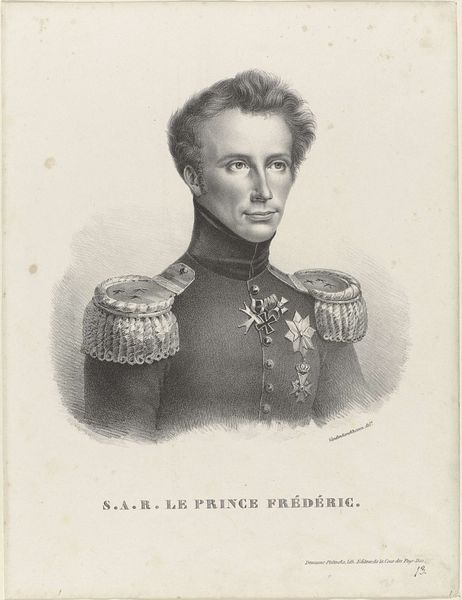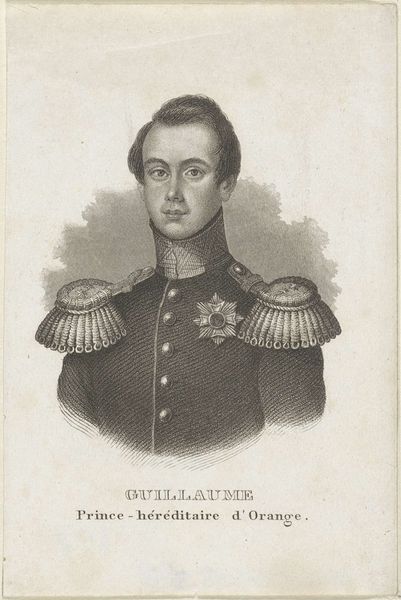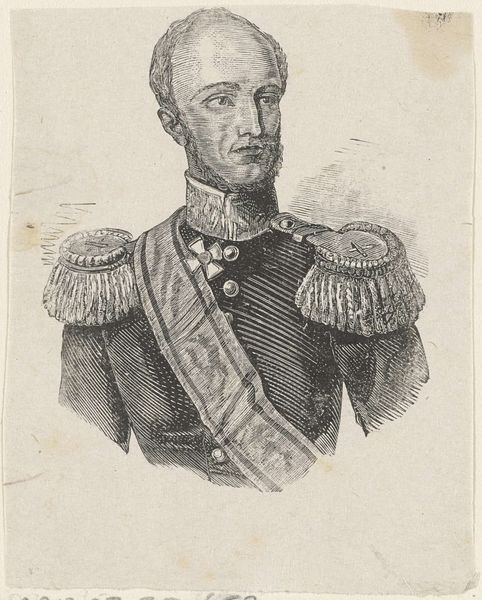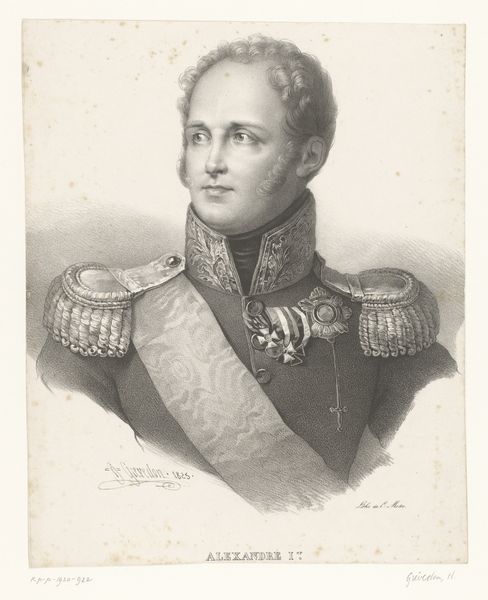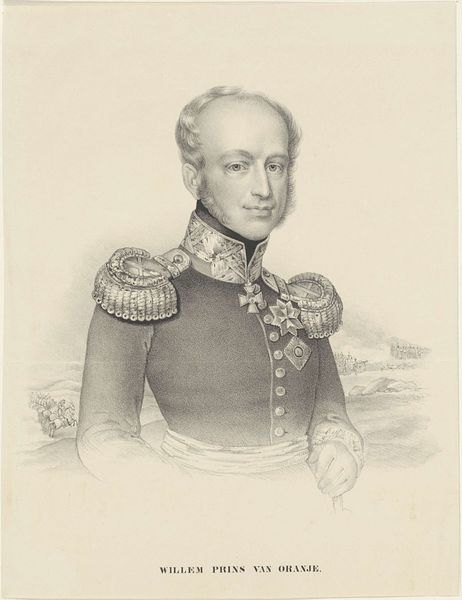
Portret van Frederik, prins der Nederlanden c. 1818 - 1845
0:00
0:00
print, engraving
#
portrait
#
neoclacissism
# print
#
history-painting
#
engraving
Dimensions: height 153 mm, width 106 mm
Copyright: Rijks Museum: Open Domain
Editor: This is a portrait of Frederik, Prince of the Netherlands, a print from sometime between 1818 and 1845, engraved by Marinus Adrianus van Straten. The precision is striking; his expression feels quite formal. What can you tell me about the context of such a portrait? Curator: Well, consider the print’s function in society. It was made during a period of nation-building and royal consolidation in the Netherlands. Reproducing images of the royal family, such as this one, would have served a very specific purpose: shaping public perception and reinforcing the monarchy’s authority after the Napoleonic era. Who do you imagine the intended audience to be? Editor: Maybe wealthier citizens who could afford such a print, or perhaps institutions showing their loyalty? It’s interesting to think of art as playing an active role in politics! Curator: Precisely! The style itself is also a clue. Notice the neoclassical elements – the almost sculptural rendering of the face, the emphasis on order and reason. This artistic language connects Frederik to ideals of leadership and stability. How does that sit with the romanticizing portrayals of monarchs we often see? Editor: I see what you mean. It's less about individual charisma and more about embodying an ideal, a role. It’s less about showing off personality and more about the political message that is communicated to the people. Curator: And the use of printmaking democratizes that image somewhat. Prints allowed for wider distribution, ensuring that more people saw and, perhaps, accepted the image of Prince Frederik as a symbol of the restored Dutch monarchy. Editor: It’s fascinating to consider how the art form, style, and distribution method all worked together to solidify political power. Thanks, this really helps me look at art in a different light. Curator: Indeed. By analyzing art through the lens of social and political history, we gain a richer understanding of its intended function and its lasting impact.
Comments
No comments
Be the first to comment and join the conversation on the ultimate creative platform.

